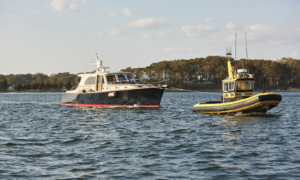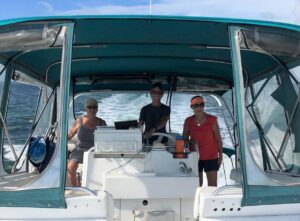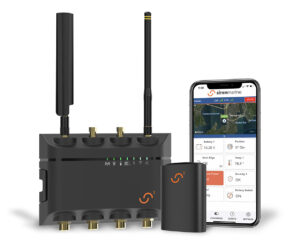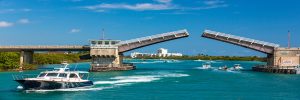Frequent analogies are made between piloting an aircraft and piloting a boat. Both require similar skills and place you at the mercy of the elements in a medium that’s foreign to our bodies. Granted, being suspended in the air may be a tad more precarious than floating on the water, but when the downward spiral of a problem begins in either setting, it typically doesn’t end well. For this reason, an aircraft pilot wouldn’t dream of taking off without performing a pre-flight checklist. Boating is safer when using checklists, too.
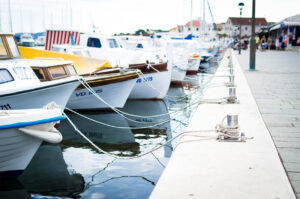
The concept of a pre-flight checklist was developed following the fatal crash of a test flight in 1935. Leading up to WWII, the U.S. Army Air Corps was looking for a new bomber to meet the demanding needs of long distant flights with heavy payloads. U.S. aircraft company, Boeing, submitted a new plane model for the Army to consider. The Army agreed to try it and scheduled a test flight to see how it would perform.
Flying the plane that day were two highly experienced Army pilots, Boeing’s chief test pilot, along with a Boeing mechanic and a representative of the engine manufacturer. After takeoff the plane began to climb, but suddenly pitched up, stalled and crashed into a ball of fire upon impact. All on board were initially rescued, but both pilots died from injuries sustained in the crash.
The accident investigation determined that before takeoff, the pilots overlooked a safety lock on the elevator and rudder controls, which kept them from controlling the plane’s pitch or attitude. Following the accident, a newspaper stated that the Boeing plane was “just too much plane for one man to fly.”
Fortunately, this was not the end of the story, but the beginning of a life-saving idea that would transform how highly complex systems can be operated by average people. Out of this tragedy came the simple and effective concept of the pilot’s pre-departure checklist. Time would prove the Boeing plane was not too much for one person, but just too much for one person’s memory. Using a simple checklist on future flights would ensure that important steps required prior to takeoff were not forgotten.
Checklists were developed for more and more parts of a flight, for emergency situations as well as more routine situations. NASA adopted the use of checklists for almost every part of the Gemini and Apollo space missions, and all astronauts were trained in how to use them. Astronauts logged hundreds of hours familiarizing themselves with and learning how to use these checklists. In fact, checklists were so important to the success of the Apollo moon landings that astronaut Michael Collins called them “The fourth crew member.”
Safety from the Skies to the Seas
Aboard our boat, we have several checklists for different applications. For example, we’ve found it useful to have two pre-departure checklists: one for leaving a marina and another for leaving an anchorage or mooring.
Preparing for each is different enough that having a specific list for the different situations ensures that everything is safe to get underway.
A checklist is also one of the best ways to manage your boat maintenance and personal safety. When your boat breaks down out in open water, you become vulnerable to additional problems.
Reminder and to-do apps popular on smart devices today are a great platform for building a list of regularly scheduled maintenance tasks. The apps allow you to set a date to inspect items like fire extinguishers, or when engine fluids or anodes need to be changed. Using apps with reminders set, relieves you from having to remember critical items that need attention. They also have a notes section where you can record engine hours of the last change and numbers for any parts used in the process.
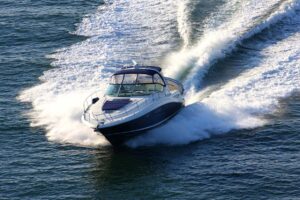
Checklists are most useful for regularly reoccurring tasks, ones we believe we do so often we’ve memorized them — tasks like starting your boat and leaving the marina. Therein lies the problem: It’s easy to become complacent with reoccurring tasks and believe you’ve done this so many times you don’t need reminders of how to do it.
For most people, life is busy, so it’s easy to get distracted while going through a task. I’ve seen it happen on many occasions — the ever-present phone rings or a boat neighbor asks a question as you’re preparing to get underway — and the next thing you know you’re pulling out with the shore power cord still connected. Before we started making checklists a habit, I was occasionally upset by a boat passing close by, without calling us on the VHF radio, only to realize I’d forgotten to turn it on.
Checklists are also important when multiple people are involved in the same process, so we use checklists for departing from the boat as well. More than once on our Sunday drive home from the boat, we looked at each other and asked, did you take out the trash or did you turn off the propane? Using a boat departure checklist makes sure important items don’t get missed and you don’t assume the other turned off the water pump breaker or turned on the battery charger.
Using checklists also has unforeseen benefits: The more you follow them, the more you benefit. The more you follow a routine process in the same order, the more you understand its faults and failings, allowing you to make improvements.
It’s easy to see the benefit when developing a checklist and when you first begin using them, but the real benefit comes into play when you continue using them even though you feel like you don’t have to anymore. That’s when they keep you from forgetting something important.


